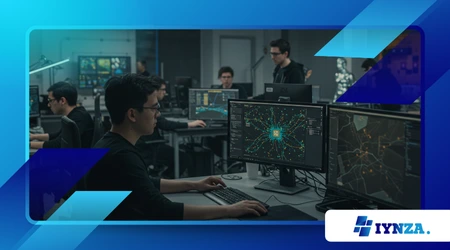How Game Developers Are Using AI to Create Smarter NPCs

Non-player characters (NPCs) have come a long way from static quest-givers and predictable enemies. Today, they’re becoming increasingly lifelike, unpredictable, and capable of learning.
Anúncios
The reason? Artificial intelligence. Understanding how game developers are using AI to create smarter NPCs helps reveal where the future of immersive gameplay is headed.
In modern games, players expect more than just stunning visuals or expansive worlds. They want believable characters who react intelligently to the player and the environment.
To meet this demand, developers are turning to machine learning, behavior trees, and neural networks to give NPCs the ability to adapt and think on their own.
Moving Beyond Scripts: The AI Revolution
Traditional NPCs followed fixed scripts. They walked certain paths, repeated lines of dialogue, and had simple if-then logic for combat.
AI has changed that dramatically. Now, NPCs can adjust tactics in real time, respond to player actions dynamically, and even develop emotional behaviors that affect how they interact.
Games like “Shadow of Mordor” introduced systems where enemies remembered previous encounters, adapted to fighting styles, and responded uniquely to victories or defeats. This wasn’t just clever programming; it was the beginning of truly responsive AI.
Developers are now using reinforcement learning, allowing NPCs to “train” against countless simulated scenarios. Over time, these characters learn optimal strategies not through human scripting but through trial and error, just like real players.
Read also: The Role of Artificial Intelligence in Game Development
Realism Through Machine Learning
Machine learning brings a new level of depth to NPC behavior. In open-world games, NPCs are no longer limited to idle animations or basic patrols. Instead, they analyze patterns, remember interactions, and make choices based on context.
For example, a shopkeeper might raise prices if the player is known for stealing, or a guard could become suspicious after repeated late-night visits. These behaviors come from models trained on player behavior, creating a world that feels alive.
Game developers are using AI to create smarter NPCs who understand and predict player intent. This reduces the predictability of interactions and makes gameplay feel more organic. It also adds replayability, as no two players will experience the same journey.
The Role of Neural Networks in Behavior Modeling
One of the most exciting advances is the use of neural networks to model NPC decision-making. These networks, inspired by the human brain, allow characters to make complex decisions that aren’t strictly coded.
A neural network might help an NPC decide whether to flee, fight, call for help, or negotiate based on a blend of emotional state, past experiences, and real-time environmental data. This leads to behaviors that feel nuanced and surprisingly human.
Games are moving from rule-based to data-driven design, where behavior evolves over time. This doesn’t just enhance gameplay—it changes the developer’s role. Instead of scripting every possibility, they now train AI agents and define learning boundaries.
Challenges and Ethical Considerations
As NPCs get smarter, ethical questions arise. Should an NPC be able to remember your behavior across saves or punish players in unexpected ways? How much control should developers give to AI systems that can evolve beyond their original design?
There are also concerns about bias. If training data isn’t diverse, NPC behavior might reinforce stereotypes or react unfairly. Developers must be careful in how they structure AI learning, ensuring a balanced and inclusive experience.
Another challenge is performance. Smarter AI requires more computing power, and not all platforms can support advanced NPC behaviors. Optimization becomes a key part of development, especially for multiplayer or cross-platform titles.
What the Future Holds for NPC AI
The trajectory is clear: NPCs are becoming more than just background elements. They’re turning into characters with goals, emotions, and memories. As AI tools improve, developers can focus more on storytelling and systems design, trusting AI to handle moment-to-moment decisions.
In the future, players might face enemies that learn over multiple playthroughs, allies that grow attached based on actions, or questlines that dynamically shift based on world state. These are not distant dreams but active projects in development.
Studios like Ubisoft, CD Projekt Red, and indie teams alike are investing in AI-driven experiences. The result will be games that feel more immersive, more personal, and more human.
FAQ: Smarter NPCs and AI in Game Development
1. How exactly does AI make NPCs smarter?
AI allows NPCs to learn from experience, adapt to player choices, and make decisions based on dynamic conditions.
2. Are there any games currently using advanced AI for NPCs?
Yes. Games like “The Last of Us Part II” and “Middle-earth: Shadow of War” feature NPCs with adaptive behavior and memory.
3. Will AI replace human game designers?
No. AI is a tool that supports design, but storytelling, world-building, and emotional engagement still rely heavily on human creativity.
4. Can smarter NPCs lead to better gameplay?
Definitely. Smarter NPCs react more naturally, making the game world feel believable and engaging.
5. Are there risks in using too much AI in games?
Yes. Poorly trained AI can lead to unpredictable or unfair gameplay, and there are also ethical considerations around control, data, and player experience.
